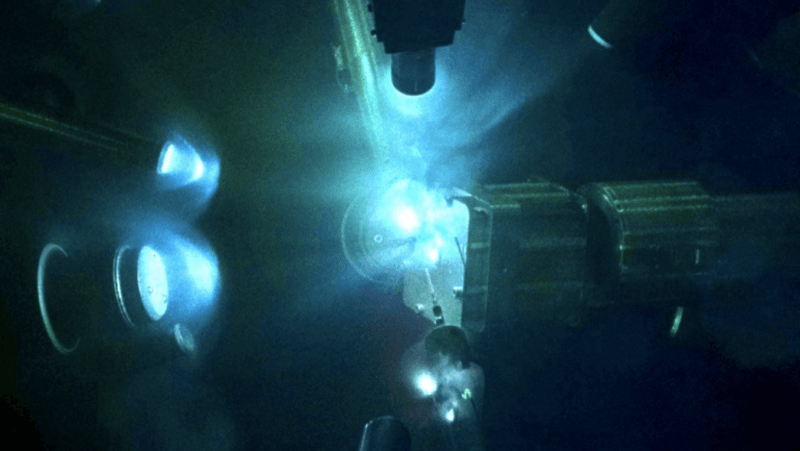The Omega laser – a piece of equipment targeted for shutdown due to proposed federal budget cuts – has just given us groundbreaking new information about the centers of exoplanets known as super-earths.
While much of our attention regarding the universe has been in exploring unknown areas, there’s actually a significant amount that we don’t know about our own planet here on earth due to the difficulty of obtaining the information. For example, we’re not exactly sure what portions of the interior of Earth case the magnetic field and plate tectonics. In the highest-pressure x-ray diffraction measurement yet, scientists have managed to use the Omega laser to study the nature of metals that we might find in the interior of rocky planets such as our own and those that are far larger – giving us some insight into the potential composition and behavior these materials deep beneath the surface are involved in.
In an interview with Gizmodo, study author Thomas Duffy from Princeton University reported that “All the properties of the material depend on their composition and structure.” Thus, by taking these measurements using the Omega laser, we might have an idea of what these Super-Earth’s cores look like, and perhaps using that knowledge to get a better explanation of how our own core behaves as well.
In order to carry out the experiment, the researchers used the Omega laser at pressures as high as 1300 gigapascals – a staggering amount at over three times the pressure of Earth’s core. The x-rays were then used to determine both the density and structures that these alloys could take on at super-Earth-like pressures. The data from this study may be able to allow researchers to determine how cores made up of different elements could affect the radius and density of super-earths, and may give us a way to predict more about a planet’s composition just by looking at the size and the way it behaves.
The Omega laser is, unfortunately, scheduled to be shut down as part of federal budget cuts. This most recent discovery does prove that it has its uses, however, and that the scientific community will definitely notice its absence. Creating pressures that high is incredibly difficult and requires highly-specialized equipment, and the Omega laser is a beast of a machine. Per the laser’s website, “It stands 10 meters tall and is approximately 10 meters in length. Omega’s 60 laser beams focus up to 40000 joules of energy onto a target that measures less than 1 millimeter in diameter in approximately one billionth of a second.” Originally designed for nuclear fusion experiments, it has since found its use in a variety of applications where such intense power is a necessity.
Scientists are understandably unhappy about the shutdown of the Omega laser, with first author June Wicks stating that “It’s so short sighted to cut out everything that allows us to ask questions for our interests…also, this is the science that allows us to train future students that will have the skills to be able to work on the hardest problems.”
This recent discovery about the composition of super-earths is notable, but that may not be enough to save it from cuts to funding. While the government clearly has other priorities when it comes to allocating funds, this will be a major blow to scientific progress in multiple fields. While the payoffs of such a project may not be immediately evident, this sort of equipment is a necessity if we’re to understand more about the universe around us – and perhaps apply that knowledge to the study of our own planet as well.





